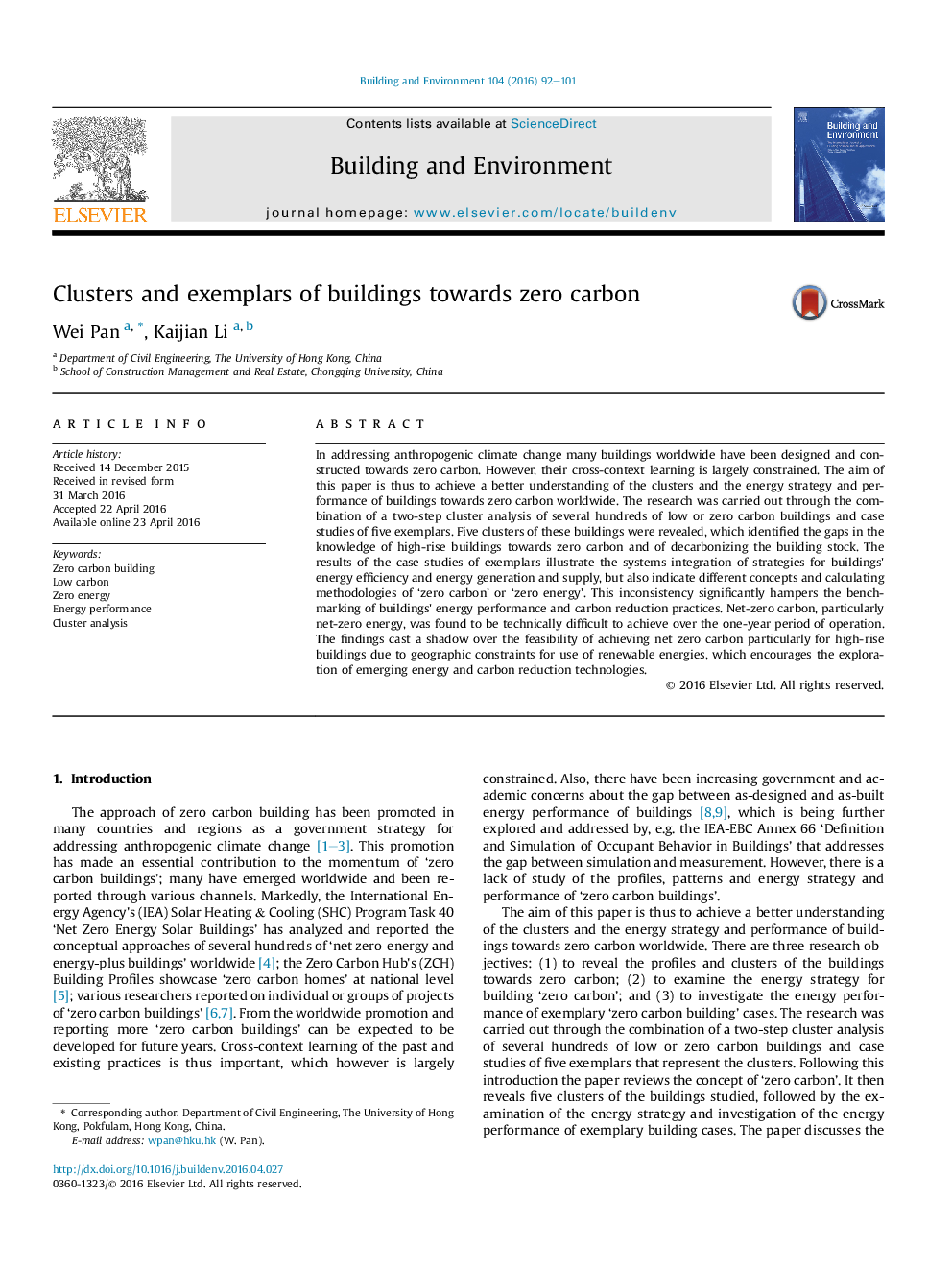| Article ID | Journal | Published Year | Pages | File Type |
|---|---|---|---|---|
| 6699104 | Building and Environment | 2016 | 10 Pages |
Abstract
In addressing anthropogenic climate change many buildings worldwide have been designed and constructed towards zero carbon. However, their cross-context learning is largely constrained. The aim of this paper is thus to achieve a better understanding of the clusters and the energy strategy and performance of buildings towards zero carbon worldwide. The research was carried out through the combination of a two-step cluster analysis of several hundreds of low or zero carbon buildings and case studies of five exemplars. Five clusters of these buildings were revealed, which identified the gaps in the knowledge of high-rise buildings towards zero carbon and of decarbonizing the building stock. The results of the case studies of exemplars illustrate the systems integration of strategies for buildings' energy efficiency and energy generation and supply, but also indicate different concepts and calculating methodologies of 'zero carbon' or 'zero energy'. This inconsistency significantly hampers the benchmarking of buildings' energy performance and carbon reduction practices. Net-zero carbon, particularly net-zero energy, was found to be technically difficult to achieve over the one-year period of operation. The findings cast a shadow over the feasibility of achieving net zero carbon particularly for high-rise buildings due to geographic constraints for use of renewable energies, which encourages the exploration of emerging energy and carbon reduction technologies.
Related Topics
Physical Sciences and Engineering
Energy
Renewable Energy, Sustainability and the Environment
Authors
Wei Pan, Kaijian Li,
